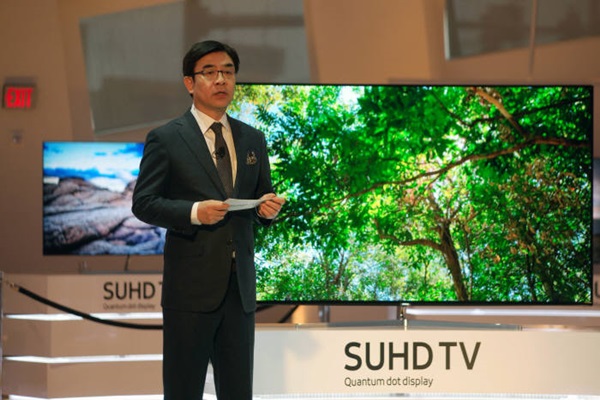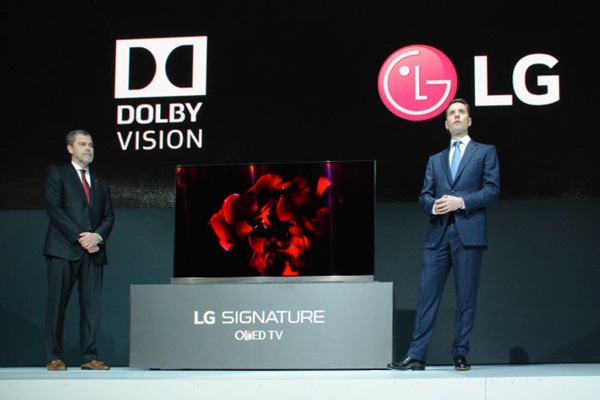Competition between 2nd Generation Quantum-Dot and OLED is becoming more intensified as they are out to take control of next-generation premium TV markets. A new competitive structure is prepared as Samsung Electronics upgrades its Quantum-Dot technology by a level. Counterattack by businesses that support Quantum-Dot technology has begun while OLED is expanding its influence in TV markets. Competition for leadership is expected.
In Las Vegas where CES 2016 has started from the 6th (U.S. time), global TV manufacturers including Samsung Electronics and LG Electronics introduced their new Quantum-Dot and OLED TV products.
Samsung Electronics applied 2nd Generation Quantum-Dot technology to its 2016 SUHD TVs. Biggest differences between 1st generation and 2nd generation are efficiency and quality. Samsung owns Quantum-Dot technology, which is the only technology in the world that does not use a heavy metal called cadmium. However a problem lied in a fact that a material that replaces cadmium, which has high coupling efficiency with sulfur, had low efficiency. This led to Samsung Electronics having many difficulties during 1st generation. Due to low efficiency, SUHD TVs with 1st Generation Quantum-Dot had had a problem where production cost was rising. Samsung Electronics was able to fix this problem by adding a new catalyst to 2nd generation and increased efficiency by more than 30%.

Due to improvement in efficiency, competitiveness for products was also improved. Not only unit cost for production was lowered, but color representation power also became better which led to improvement in quality that is the major point for TVs.
“Our major technical skill was to use a new catalyst to improve efficiency.” said President Kim Hyun-seok of Samsung Electronics. “It can be seen that productivity has increased by 30% since efficiency has improved by 30%.”
Quantum-Dot base camp, which was only led by Samsung Electronics, has expanded as China’s TCL and Hi-Sense have put out new Quantum-Dot products at CES. These businesses also chose Quantum-Dot as next-generation premium TV.
OLED base camp, which opposes Quantum-Dot base camp, is led by LG Electronics. LG Electronics is looking to strengthen its competitiveness in quality in premium TV markets by greatly increasing proportion of Ultra OLED starting from this year. Its plan is to focus more on UHD premium products rather than full HD products.

LG Electronics explains that OLED TVs can express perfect black color since they do not need backlights and have each pixel emits its own light and maximize high-dynamic range (HDR) effect that increases contrast range. It
Panasonic put out new OLED TV products at CES. Although there were not any other new products at CES, there are many businesses including Chinese manufacturers that already joined OLED base camp. Expansion of OLED base camp also can be seen from LG Display’s goal on shipments of panels.
“Our goal on this year’s shipments of OLED TV panels is 1 million and it is 1.5 million next year.” said Vice-Chairman Han Sang-bum of LG Display.
Las Vegas (US) = CES Special Reporters wingh1@etnews.com